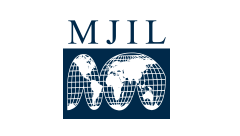Abstract
In the 1970s and 1980s, the Boeing aircraft company worked to address the rising cost of jet fuel by inventing lighter metal alloys for use in aerospace materials. Among its discoveries was a method of producing aluminum-lithium alloys with high "fracture toughness," and in 1989, Boeing received a patent for the process. Five years later, another aerospace company working as a National Aeronautics and Space Administration (NASA) contractor, Lockheed Martin, was attempting to solve a similar problem related to materials used in the space shuttle. Lighter materials were necessary for future shuttle missions to transport components of the International Space Station. Lockheed Martin independently discovered the same method that Boeing had patented, and Lockheed Martin used it to lighten the shuttle's external fuel tank. When Boeing discovered the unauthorized use of its patented method, it sued the U.S. government and won a judgment of patent infringement in 2006. Because U.S. law does not allow patent injunctions against the government, Boeing must settle for damages, which will likely be a reasonable royalty. Boeing's legal dispute with the U.S. government may seem uncontroversial-even mundane-but it is an example of one of the most contentious legal mechanisms in international law: a patent compulsory license, which is colloquially referred to as "breaking a patent." True, Boeing's case does not involve humanitarian suffering or pit an international conglomerate against a developing nation. It's just business. But that is exactly the point. The Boeing case demonstrates that the patent breaking mechanism can have relatively common applications, and its imposition by the U.S. government is evidence that even developed, intellectual property rights-centric nations are willing participants in the system. Such a case requires a cogent legal structure to ensure the government does not inequitably diminish Boeing's established rights. However, in most academic and political debates, contexts like those encompassing the Boeing case are ignored. The analysis has primarily focused on a few (albeit important) contexts, particularly access to medicines. The problem with this approach is that it has left us with a broader international regime that is understudied, vague, unpredictable, and not useful when it really counts. A more comprehensive assessment is necessary to understand how the mechanism of patent breaking should be applied efficiently across all of its possible non-remedial contexts.
Recommended Citation
Daniel R. Cahoy,
Breaking Patents,
32
Mich. J. Int'l L.
461
(2011).
Available at:
https://repository.law.umich.edu/mjil/vol32/iss3/2
Included in
Food and Drug Law Commons, Intellectual Property Law Commons, International Trade Law Commons, Transnational Law Commons

